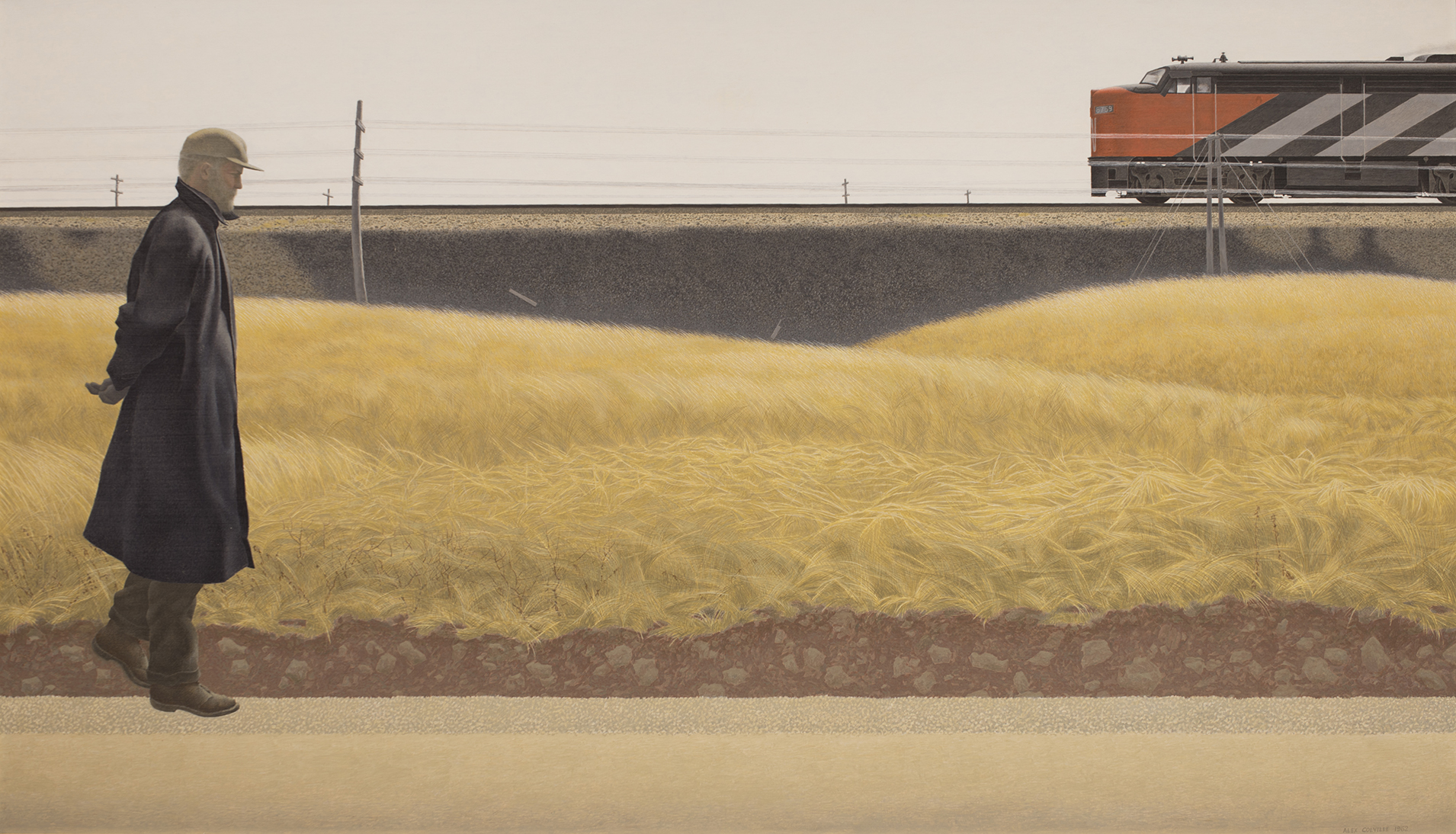POETICS OF SPACE: ALEX COLVILLE’S OCEAN LIMITED

Alex Colville’s work is almost immediately recognizable and often sought out by tourists and locals alike when visiting the Art Gallery of Nova Scotia. As one of Atlantic Canada’s most celebrated artists, Colville made significant contributions to the history of painting and printmaking both nationally and internationally throughout his lifetime. Located in the Ondaatje Gallery in the North Building of the Art Gallery of Nova Scotia two Alex Colville works on display. Ocean Limited (1962) is a painting Colville completed towards the end of his teaching years at Mount Allison University. This work is a prime example of his mastery of geometric precision as well as his expression of the everyday.
Born in 1920 in Toronto, he moved with his family to Amherst, Nova Scotia in 1929. Shortly after their move, Colville contracted pneumonia, leading to a near-death experience and a six-month long isolated recovery. His time in isolation had a profound effect on him and it was during that time that Colville began reading and drawing extensively. In 1938, he studied art at Mount Allison University and upon graduation, he joined the Canadian Amy to serve as a member of the War Art program. It was during his time in service that Colville was exposed to historical European painting at the Louvre in Paris, which proved to be hugely influential to his style and meticulous technique.
Colville is regarded as the Grandfather of what is known as “Atlantic” or “Magic” Realism. This style of realism is represented by other artists from the Atlantic region such as Tom Forrestall (b.1936), Christopher Pratt (b.1935) and Mary Pratt (1935-2018). This type of approach infuses symbolism in everyday scenes as well as a magical, sometimes upsetting, surreal quality. His brushwork can be regarded as a type of pointillism but has an effect more similar to the Renaissance paintings he saw in the Louvre than that of Georges Seurat (1859-1981). Laying down tiny, individual strokes of colour, layer after layer is what creates the extremely smooth and finished surface of Ocean Limited. This style of pointillism pulls attention away from the expressive nature of brushstrokes and towards a more unified, cohesive surface. Colville’s concern with creating images based on concepts of being human as well as imbuing the ordinary with symbolism connect him with those artists participating in movements such as the American Luminists (1850s-1870s) and Precisionists (1920s-1930s).
Ocean Limited is an oil and resin on Masonite painting which depicts a landscape wherein a figure is positioned walking along a roadway while behind him a train enters the opposite side of the painting while traveling along a raised track. These two figures are in direct opposition to each other, as they enter opposite sides of the painting but are engaged with each other through specific geometric relationships. In the collection at the Art Gallery of Nova Scotia there are seventeen studies that Colville did for Ocean Limited that were created between 1961 and 1962, when the painting was completed. Colville’s studies work out the geometry of major elements in the composition and are where we see most clearly his use of mathematics to establish perspective and marry all the elements in the image together. These elements may not seem obvious to the viewer at first glance, but what they communicate is an innate sense of visual order and precision which is not found present in the real world. This unconscious awareness of the surreal draws us into Coville’s composition and leads us to understand how important these studies were to his ability to subtly communicate ideas and feelings through order and geometric balance.
What is compelling about Colville’s work is his ability to imbue a seemingly ‘real’ scene with an uncanny sense of danger, longing and desire. His paintings present a brand of surrealism that lacks theatrics and, instead, plots itself in the analytical mind; not reflecting reality as it is exactly, but instead a symbolic interest that Colville had in his personal life. Next time you are at the Art Gallery of Nova Scotia or taking the virtual tour, make sure to check out Ocean Limited. Think of his process and consider how he placed each precise element and what emotional reaction you may have to each of these parts as well as the whole. If you would like to learn more about Alex Colville’s life and work, you can visit The Art Canada Institute’s online book here.

